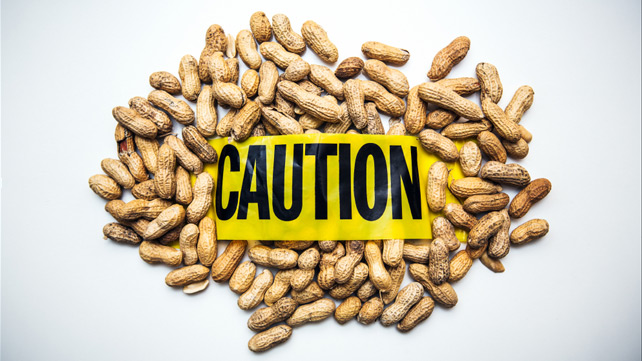A couple of decades ago, food allergies, especially life-threatening reactions, were almost unheard of. Now, schools are banning certain foods for the safety of students who may have allergies, and nearly everyone is convinced that they have an allergy. What exactly is a food allergy and how does a food allergy differ from a food intolerance?
Many people are unaware of the differences and automatically assume that any adverse reaction to a food means they are allergic, which is inaccurate.
A food allergy is an immune reaction to an offending food. Allergic reactions occur very quickly after eating the food to which the individual is allergic. Allergic reactions can range from a mild rash to potentially fatal anaphylaxis.
By contrast, a food intolerance is a reaction caused by an inability to digest specific foods. Common symptoms of a food intolerance include cramping, bloating, nausea, vomiting, diarrhea, etc. While food allergies can be fatal, intolerances are not. However, this crucial difference means it is very important to diagnose adverse food reactions accurately in order to ensure proper treatment.
The culprit behind food allergy reactions is a specific antibody known as immunoglobulin E (IgE) along with a specific type of cell known as a mast cell. Mast cells are found in the nose, throat, skin, and other parts of the body where allergic reaction symptoms manifest.
Essentially what occurs is, when a person eats a food to which they are allergic, IgE floods the system and binds to the mast cells. When this occurs, histamines and other chemicals are produced, causing the symptoms.
It’s not entirely clear exactly why some people have these reactions to otherwise innocuous substances. Some think that starting children on solid foods, particularly common allergens, too early may be a factor. Delaying solids until a baby’s immune system is more mature may reduce the risk.
Symptoms of a food allergy vary from one sufferer to the next. Some of the most common include itching in or around the mouth, difficulty breathing, trouble swallowing, swelling, stomach pain, diarrhea, nausea, and vomiting. Symptoms may spread throughout the body and shift as they go. An allergic reaction may occur instantly, or a delayed reaction may occur up to an hour after the food was eaten.
The most common food allergies include peanuts, tree nuts, soy, wheat, milk, shellfish, and eggs. Peanuts are the most common life-threatening allergy and can be so severe that it is not necessary to eat, or even come into direct contact with them for a severe reaction to occur. Merely smelling peanuts has been known to result in anaphylaxis in a highly sensitive individual.
Diagnosing a food allergy can be complicated and typically starts with food diaries and elimination diets. When these tools are unsuccessful, more involved, tests may be used. These include a double blind food challenge or scratch test.
Treating a food allergy starts with avoidance, which means a lifetime of carefully examining all food labels. It’s important not to become complacent, as manufacturers may change their ingredients at any time and allergy producing foods are often found in surprising places. Those with severe allergies will need to carry adrenaline in the event of accidental exposure. Medical alert bracelets should also be worn to inform emergency personnel of the allergy.
For those with less severe allergies, there are approaches that can help alleviate symptoms. However, avoidance is still the best strategy.


Leave A Comment
You must be logged in to post a comment.